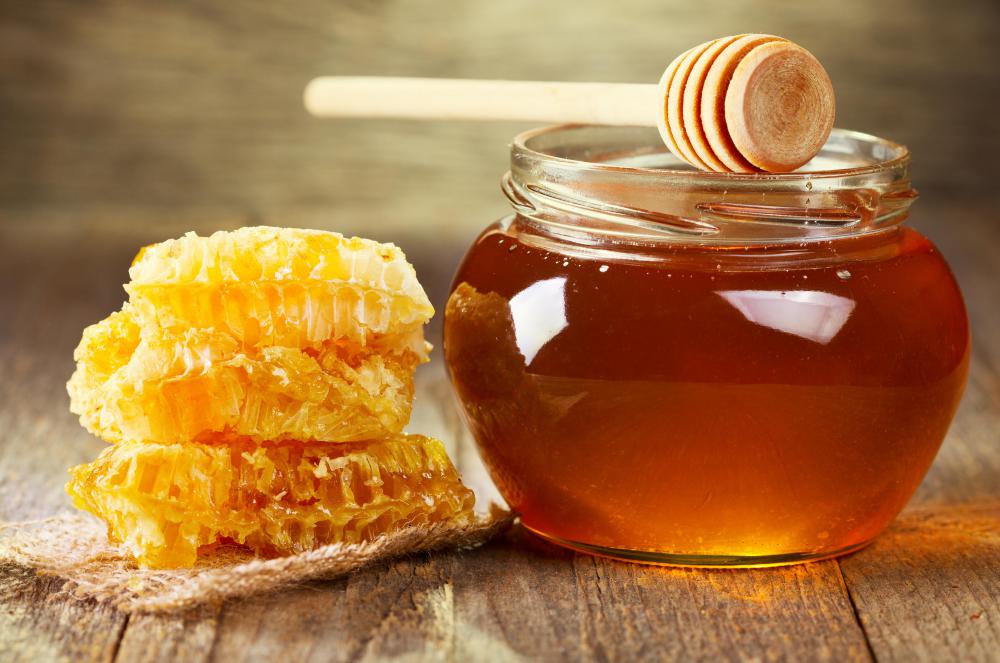At AllThingsNature, we're committed to delivering accurate, trustworthy information. Our expert-authored content is rigorously fact-checked and sourced from credible authorities. Discover how we uphold the highest standards in providing you with reliable knowledge.
What is Sourwood?
Sourwood is a small to medium sized tree in the heath family, also known as Ericaceae. These distinctive trees are native to the Eastern United States, where they are often used as ornamentals. The sourwood tree is deciduous, and it is one of the first trees to turn in the fall, creating a bright patch of red color in the garden before losing its leaves. Many nurseries carry sourwood seedlings, for people who are interested in using them as ornamentals in their gardens.
The scientific name for sourwood is Oxydendrum arboreum, and the tree is also known as “sorrel tree,” in a reference to the distinctive sour, sorrel-like flavor that the leaves have. Some people like to chew the leaves to stimulate saliva production, although the leaves are not safe to swallow. The timber of sourwood trees is largely unusable, although large branches and trunk sections can be used for tool handles and as a source of exotic wood for cabinet inlay and other wood crafts.

In the spring and summer, sourwood trees have rich green leaves. The flowers of this plant grow on stalks, also known as racemes, and they are small, white, and bell-shaped. The flowers of many plants in the heath family are very similar; when you see sourwood in bloom, you can see the resemblance to manzanita, blueberries, and heather. Sourwood trees have grayish bark with a faint red tinge. In the early fall, the leaves start to turn, ultimately becoming a vibrant red before dropping from the tree.

Like other members of the heath family, sourwood is extremely hardy. These trees prefer poor, acidic soils to grow in, and they can withstand wind, rain, and other inclement weather, although they may adopt twisting growth habits to protect themselves from the elements. Sourwood can also be shaped, which makes it a useful ornamental for the garden. The flowers, incidentally, produce a prized nectar which contributes a unique flavor to honey; some bee keepers like to set up near sourwood trees to take advantage of this.
When kept clipped, a sourwood's size can be kept relatively small, making it more like a bush or shrub. These trees can also be allowed to grow and spread, although they will never become very large. There are a number of ways to use sourwood in the garden; a classic use of these trees is as a single accent in the middle of a lawn or in a patch of related trees and plants to provide visual contrast.
Frequently Asked Questions
What is sourwood and where can it be found?
Sourwood, scientifically known as Oxydendrum arboreum, is a deciduous tree native to eastern North America. It thrives in the Appalachian Mountains and can be found from Pennsylvania to Florida. This tree is renowned for its beautiful fall foliage and the highly valued honey produced from its flowers.
What are the distinctive features of sourwood trees?
Sourwood trees are recognizable by their lance-shaped leaves that turn vibrant shades of red, orange, and purple in the fall. They grow up to 30 feet tall and produce drooping clusters of fragrant, white bell-shaped flowers in the summer, which are a magnet for bees and butterflies.
Is sourwood honey different from other types of honey?
Yes, sourwood honey is highly prized for its unique flavor profile. It has a rich, buttery taste with a light spice, often described as gingerbread-like. According to honey connoisseurs, it's one of the most sought-after honey varieties and has won numerous awards for its exceptional quality and taste.
Can sourwood trees be used for landscaping?
Sourwood trees are excellent for landscaping due to their moderate size and ornamental qualities. They provide year-round interest with their summer flowers, vibrant autumn leaves, and attractive seed capsules in winter. They are ideal for small gardens and naturalized areas, preferring acidic, well-drained soils.
How does sourwood benefit the ecosystem?
Sourwood trees play a vital role in their native ecosystems. They are a nectar source for bees and other pollinators, which is crucial for the pollination of many plants. Additionally, their flowers provide food for hummingbirds, and their foliage serves as a food source for caterpillar species, supporting biodiversity.
Are there any special care requirements for growing sourwood trees?
Sourwood trees require minimal care once established, but they do have specific needs to thrive. They prefer acidic soil with good drainage and do not tolerate drought or waterlogged conditions well. Sourwood trees also benefit from mulching and should be planted in a location with full sun to partial shade for optimal growth.
AS FEATURED ON:
AS FEATURED ON:












Discussion Comments
I planted a sourwood tree and it is only 24 inches tall, it sprouted leaves but the leaves died in early oct. what went wrong. The tree itself still looks like it is still alive according from the wood itself. I want to know if it will come back next spring.
Post your comments